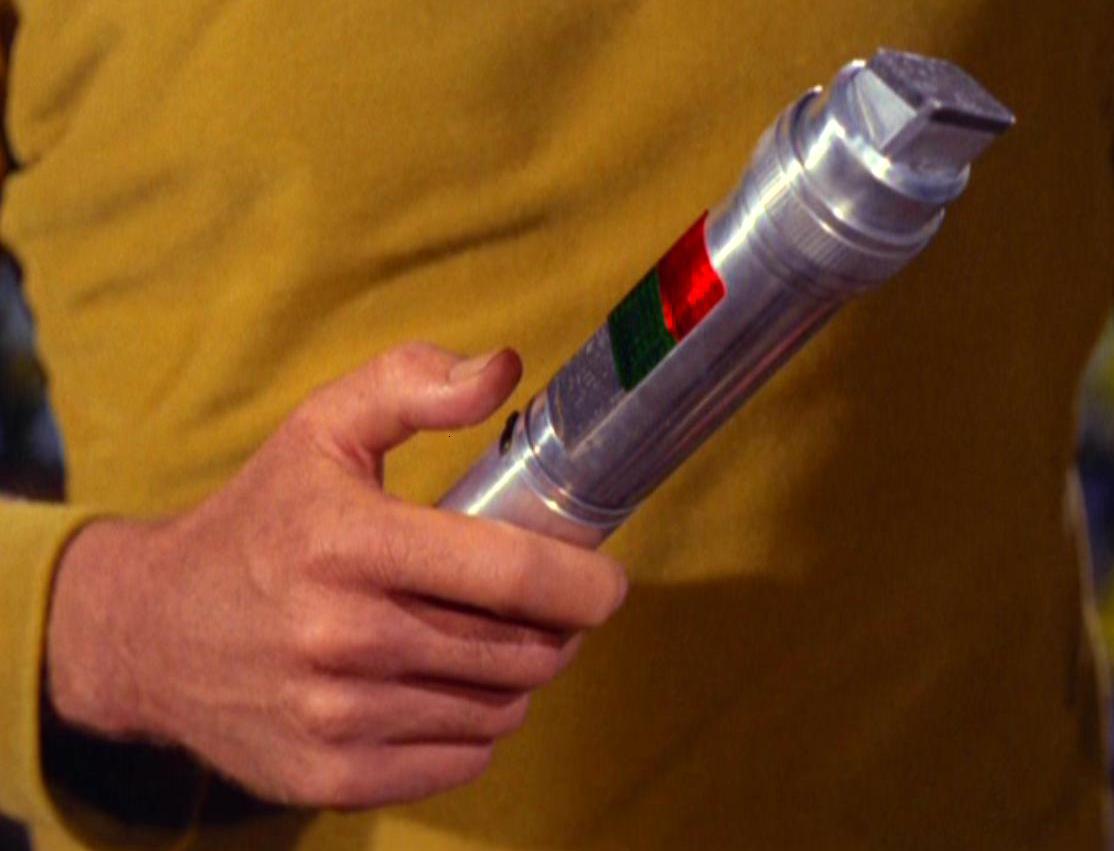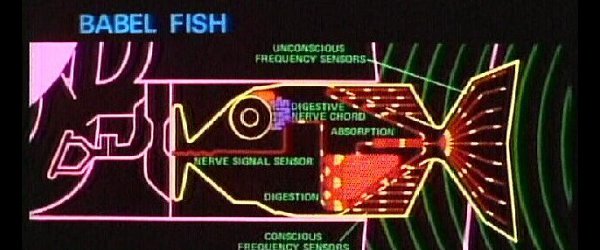Now You’re Speaking My Language … Sort Of

Throughout science fiction, universal translators are of absolute importance. Without it, the absolute worst thing conceivable in the universe happens. When alien races can’t communicate, storylines tend to suck more than when they can. This is an outcome worse than any gravitational singularity.
 It’s not always easy to communicate with other people. Sometimes there are misunderstandings. Sometimes there is miscommunication. Other times, you simply find yourself talking to a complete idiot. But usually it’s because two people speak completely different languages altogether. So how can people get along in places, like foreign countries or alien planets, when they simply don’t know the native languages? They could wait on some Pentecostal form of Divine Intervention, they could implement a secondary “universal” language for everyone to be taught, or they could rely on some sort of Universal Translator technology. The first is unpredictable and the second is impractical. But the final one can actually be engineered.
It’s not always easy to communicate with other people. Sometimes there are misunderstandings. Sometimes there is miscommunication. Other times, you simply find yourself talking to a complete idiot. But usually it’s because two people speak completely different languages altogether. So how can people get along in places, like foreign countries or alien planets, when they simply don’t know the native languages? They could wait on some Pentecostal form of Divine Intervention, they could implement a secondary “universal” language for everyone to be taught, or they could rely on some sort of Universal Translator technology. The first is unpredictable and the second is impractical. But the final one can actually be engineered.
The Language Barrier
I once heard a story about a minister who went on a mission trip to a remote island to bring Christianity to the native people. He trained a young man in the tribe as a pastor to carry on in his absence. The minister left and returned a couple of years later. He listened to the young pastor preach a sermon in which instead of referring to Jesus as “The Lamb”, he called Jesus “The Pig”. The minister confronted the young pastor afterward and explained that it was sacrilegious to call Jesus “The Pig” instead of “The Lamb”. The young man asked the minister how many lambs he saw on the island. The minister fell silent. The people didn’t know lambs. But they knew pigs.
Translation is not the easiest thing one can imagine, not by a long shot. Sentence structures vary from language to language. Sometimes, individual words don’t translate properly. There’s different dialects as well as various slang throughout those dialects. And sometimes, there are words that have no translation. To translate directly between languages is extremely difficult. The idea here is to avoid a Pythonesque “Dirty Hungarian Phrasebook”.
Ignoring potential alien languages altogether, let’s just think about language differences here on Earth. Sentence structures are almost never identical. And not all languages have identifiers for each part of speech. One that does, Japanese, has its own interesting nuances. First, there are two variations of the language, formal and informal. Secondly, it has four alphabets. Hiragana is for patently Japanese words, Katakana is primarily for adopted foreign words, Romaji is the English (Roman-style) lettering, and Kanji is a pictorial variation of Chinese writing. The Chinese language has many dialects, all requiring use of proper inflection, and the wrong inflection creates a completely different word. The only commonality between dialects is the written language, which consists of thousands of pictorial characters. Brazilian Portuguese has its own interesting quirks. The letter “r” has different pronunciations based on whereabouts it’s contained in a word. The are also the various African “click” languages. And then there’s the monstrosity known as English. The rules of spelling, pronunciation, and grammar vary widely in English due to the fact that it’s an amalgam of many various languages. Wouldn’t you hate to have to learn that one?
 Oral Translation
Oral Translation
Now comes the issue of how to bridge the wide language gap. Believe it or not, a rudimentary translator is well within reach. When a person translates one language into another, that person usually converts the language into concepts and ideas, then speaks those concepts and ideas in another language. This type of intellectual translation is a bit complicated for a computer to handle. Google is working on translation software in a mobile app, but it’s unknown how well that might turn out. One thing we know computers can handle is text. If you ever used Bing or Google to translate a page or document on the Web, then you know what I’m talking about. They’re far from perfect (and often have an approximate translation, not exact), but they are constantly improving.
Here is the gist of it. For a computer to translate one language to another, it analyzes the input text for structure and vocabulary. Then it attempts to return proper vocabulary and sentence structure in the target language. If we wanted to use computers to translate languages verbally, then all one has to do is add speech-to-text on one end, and text-to-speech on the other end. Presto! Instant translator. Perhaps one day there will be a small hearing aid-sized device which can fit in the ear and translate in real time. Unlikely, but fun to think about. It would certainly be less annoying and far less painful than a Babelfish. (I would still recommend you bring a towel though.)
 Written Translation
Written Translation
Then there’s the written or non-oral translation. This is, for the most part, a lot simpler since it has no audio format conversion to worry about. But it’s still not perfect. Anyone who has tried translating by way of Bing or Google Translation can attest to that. But there is still practical use for such translation capability.
Imagine you’re in a foreign country, one in which you don’t speak the language. All the signs at the airport are written in the language you don’t understand. How do you know where you’re going? How about Augmented Reality? Perhaps there can be a smartphone app which can overlay information in one’s own language when signs are viewed on that phone. Something similar is being done in Korea where information on different locations is shown when the environment is viewed through the phone. The same technology can be used to provide information on products simply by scanning the label. I don’t know if it’s being used for that, but it could be. Another sort of augmented reality could be a digital “language” visually represented by a graphic not unlike a QR Code. One simply scans the image and the translation comes up.
But perhaps a phone isn’t needed. What if one wore glasses with a graphic heads-up display built in? All one would have to do is look at the sign and the translation would appear. An even more impressive option would be a display with tiny multifaceted elements covering its surface. Then much as a linticular array can make either a different image or a 3D image appear on a screen based on the angle of viewing, the multifaceted nature of the display can target a sign display directly to the user in that person’s own language, and a different one to someone else standing right by that person. The language can be determined by something carried by the user (like a mobile app) which can let the display identify the location of the viewer. Then the one viewing it can know where the important locations are … like the airport bar.
There you go. Modern science and technology can provide for universal translation. Sure, it might not be Star Trek. But anything that can bridge that gap, whether you speak Swahili, Farsi, Ukrainian, Navajo, or my native language, Sarcasm, you’ll finally be able to speak my language … sort of.
![]()





I’d like to suggest a non-technological solution.This Thursday (26 July) is the 125th anniversary of the publication of Esperanto. That’s quite an achievement for what started as the idea of just one man. It has survived wars and strikes and economic crises, and continues to attract young learners, all without state subsidies.
I’ve used it in speech and writing in about fifteen countries over recent years, and I recommend it to any traveller as a way of making friendly local contacts.
What do you think of Esperanto?
Esperanto is a really good concept. Though its Latin base heavily favors native and secondary speakers of Romance languages. Others (Germanic, Slavic, Nordic, Asian, etc.) are at a bit of a learning disadvantage. But even so, it requires people to learn another language in order to communicate. But when someone can have a 700 MHz computer the size of a credit card for $25, technology seems to be the easier and more accessible way to go. The translations aren’t perfect, but they’re good enough to get by. And there’s no need to learn another language.